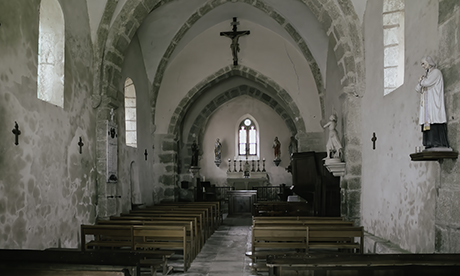French President Emmanuel Macron made a promise last Monday while visiting Mont-Saint-Michel for the millennium celebration of the iconic hilltop abbey in Normandy.
He said the State would help villages and municipalities throughout France finance the upkeep and restoration of their empty churches.
As part of his commitment, the president intends to launch a new protection campaign: today, of the 50,000 religious buildings dedicated to worship (42,000 of which are Catholic), only 10,500 are classified or registered as historic monuments, which gives them greater access to subsidies. He also explained that he wants to use the national subsidy tool again, as was the case for Notre-Dame de Paris.
A necessary and popular measure
Very well. Since 1905, towns and villages have owned places of worship built before that date, the vast majority of which are Catholic churches, and are struggling to finance the restoration and upkeep of their bell towers.
It is, therefore, a necessary move.
It’s also a popular measure, since, as all the polls and surveys show, the French people are extremely attached to their churches.
As soon as one of them is sold, converted into a hotel, a gym or whatever, the whole neighbourhood cries scandal…
Of course, but with less than 3% of the population attending Sunday worship, what’s the point of these restorations?
To preserve a closed heritage?
We all know how difficult it is, in a number of villages, to get hold of the precious key that allows you to enter and admire an altarpiece or a painting that are hidden away in a place that is hardly ever used.
How long will the French be willing to pay (because we are the State) for buildings that have become ghosts of the past?
It’s a delicate question.
On the one hand, our fellow citizens value their churches.
On the other hand, religious use is far from being the primary purpose for these locales.
The Catholic Church, as the benefactor of the buildings, has a say in how the properties are used.
It can therefore accept or refuse hosting other events, often concerts.
The difficulty today is that each steeple has its own parish priest, and so there are many different responses to requests.
It is undoubtedly in the interest of the institutional Church to allow “shared uses” of church building, or, as the bishops put it in a more restricted sense, “compatible uses”.
A church can be used for Mass once a month, concerts or theatre, as well as a place of remembrance, education (heritage and history training), a space for artistic creation, or even charity work, such as a community grocery store or a day shelter for the homeless.
Fewer priests
With a little goodwill, there are a thousand ways of imagining these other services.
The institutional Church still needs to renounce this parochial conception of its organization, which dates back more than eight hundred years.
Since the Gregorian reform, the parish-church has been considered a sacramental space, under the authority of the parish priest.
In short, without the priest, there is no church… But this is no longer possible, simply because the number of priests is falling, and it is physically impossible for them to “hold” all those churches.
When a priest says “my” parish and has to manage 48 church buildings, it’s quite complicated!
It must be recognized that the entire community is concerned about how these churches are put to use.
If the mayor’s office is restoring a church, it’s normal that city officials will want to see how it can be of service to society.
One thing is certain, and this should reassure the bishops who are apprehensive on this subject: the only way to ensure that these church buildings continue to serve the common good and are not privatized is for the Church to remain the lessee. Few, if any, want to dislodge it. We might as well rejoice…
- Isabelle de Gaulmyn is a senior editor at La Croix and former Vatican correspondent.
- First published in La-Croix International. Republished with permission.
Additional reading
News category: Analysis and Comment, Great reads.




